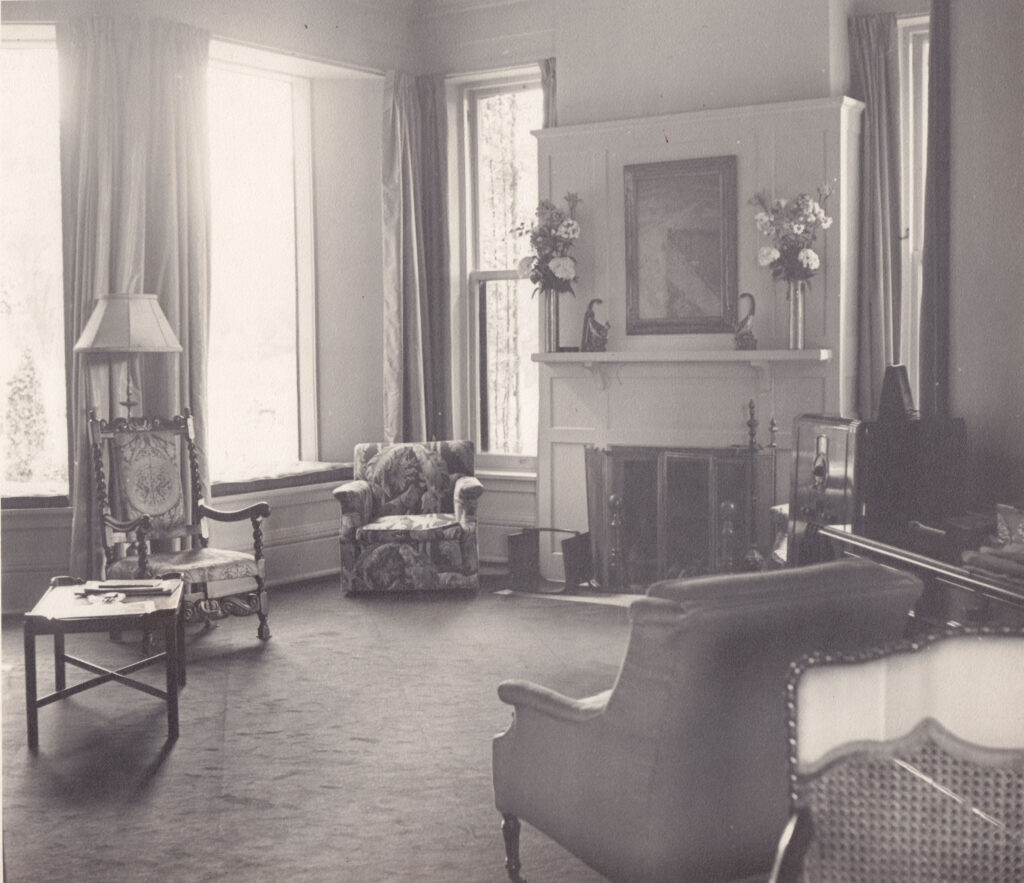
Since Brucemore opened its doors as a historic house museum and community cultural center in 1981, over a million people have come to the site to take a tour of the house, attend a cultural program, or just have a peaceful walk in the garden. Seeing the collection of artifacts from the families who called Brucemore home is one of the of the many factors that draw visitors to want to explore and learn about the estate’s history. Chances are, however, even if someone has been visiting Brucemore for years, they still will not have seen everything in the collection. The “40 Years” exhibit will showcase some of the rarely seen items and illuminate what those items can teach us about the history of Brucemore and the community.
Like most museums, Brucemore only displays a small portion of what it holds in its collection. Most museums display less than five percent of their collection at any given time. This is a universal reality for many reasons; most museums have limited gallery or display space and most artifacts are fragile in nature. Brucemore displays more than your average gallery-style museum, though with a display rate at closer to 30 percent.
Over its 40 year history as a museum, what Brucemore has on display has changed. Visitors in the first few years would have seen the home furnished much as the Hall family, the final residents of home, had left it. Many rooms were also used as office space for local organizations or Brucemore staff, and thus, were inaccessible to visitors. As staff began to research the broader history of the home in the early 1980s and 1990s, the importance of interpreting the Douglas era became clearer. The landscape, multiple outbuildings, and many character defining features of the mansion were added during the period that the Douglas family lived on the estate. As Hall era furnishings aged and Douglas family members began to donate family heirlooms, restoring the home to the period of 1906 to 1937 became the interpretive goal.

Several rooms in the mansion have been restored to that era including the Study, Library, Great Hall, Dining Room, Sewing Room, and Groom’s Room. Furnishings from those rooms from the Hall era were moved to storage, and though some of the items have been featured in various exhibits since, many of the objects have not been widely available for public view.
Other items are rarely displayed due to their fragile nature. Brucemore’s collection of period costumes from family members is rarely displayed due to the risk associated with displaying clothing. Some clothing items are placed on display during the holidays. Some items are damaged and need conservation work before they can be safely displayed. Photographs and archival collections largely remain in storage and viewing is limited to researchers and staff. Facsimile copies are used for display as items are needed.
Even though many items in the collection aren’t seen by visitors very often, these objects still serve important purposes. They help the staff learn about the histories of the families and how they fit into larger historical trends and stories. This information informs the stories shared on tours and decisions about exhibits, conservation, and interpretation. The items featured in this exhibit are all unique and have important stories to tell a about the families of Brucemore.
Enjoy this peek behind the scenes and view the virtual exhibit!